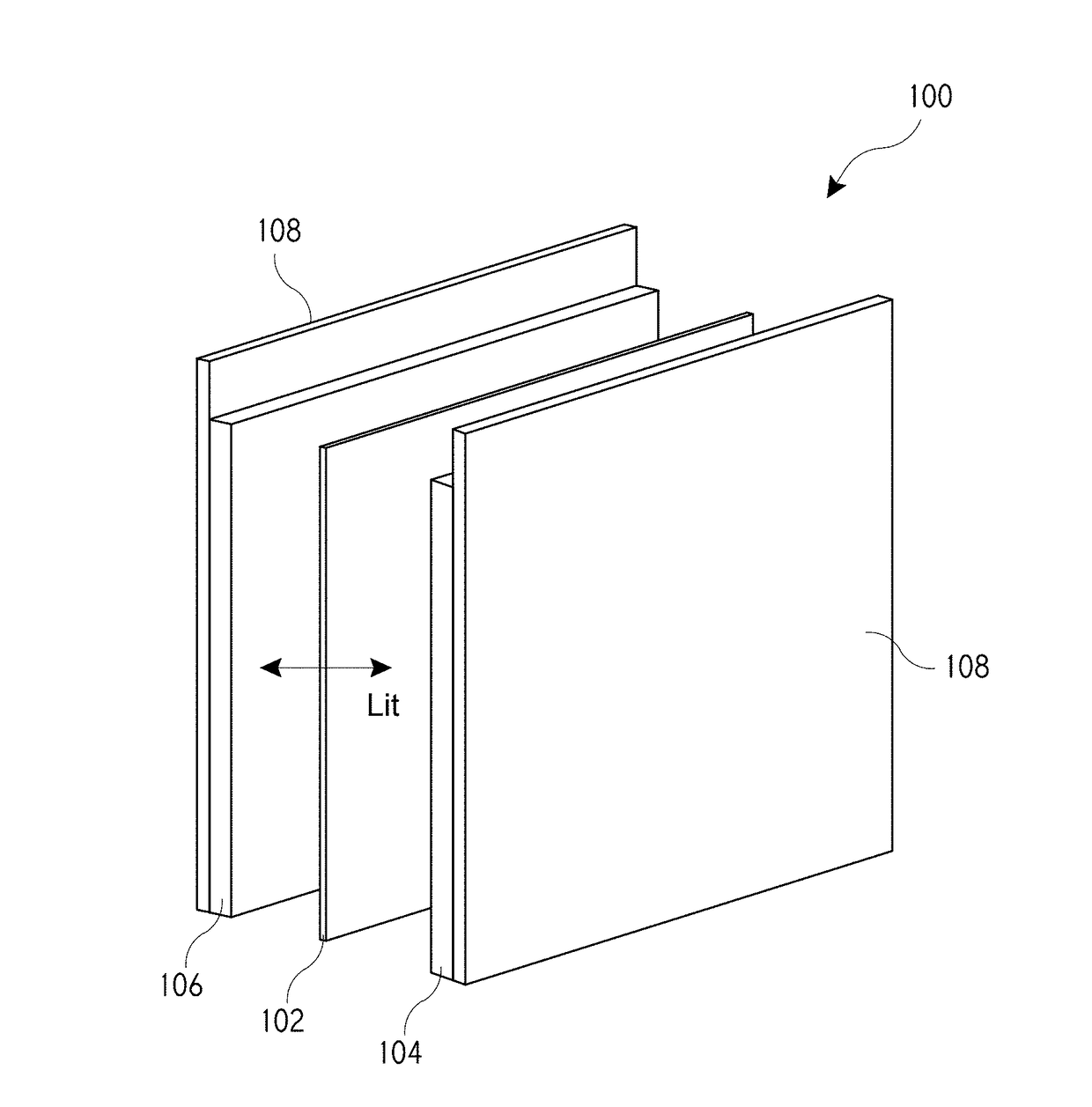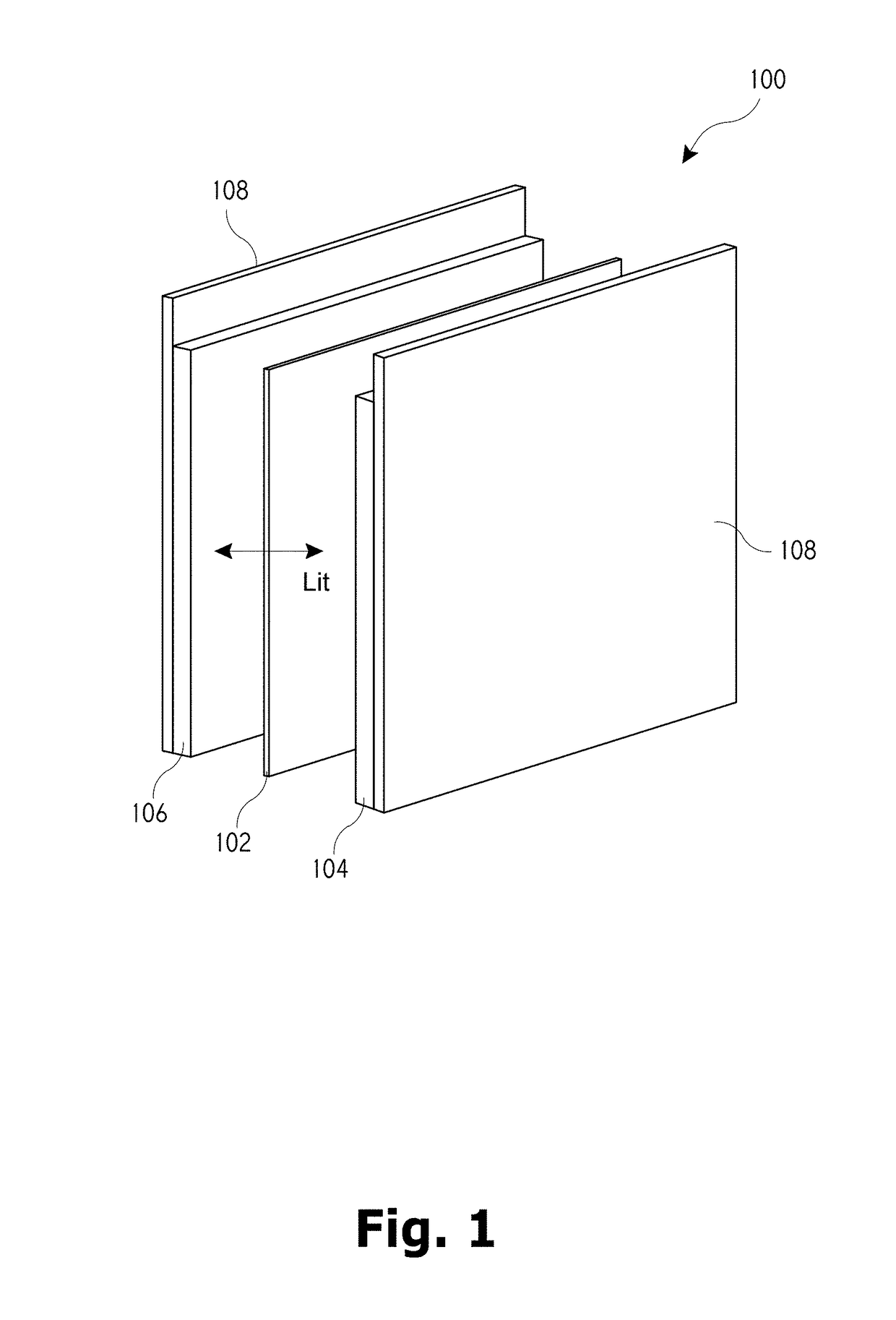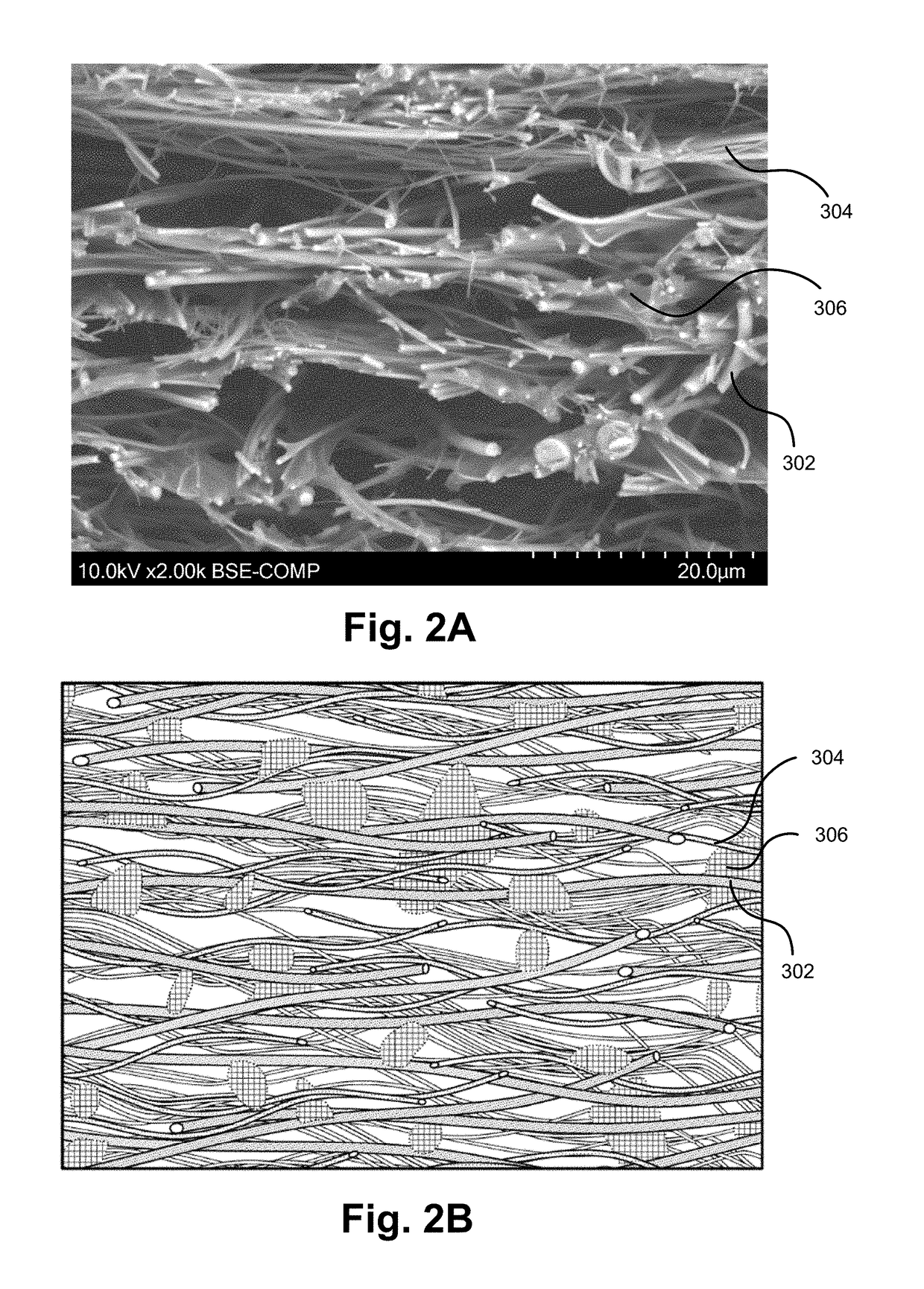Composite separator for lithium ion batteries
a lithium ion battery and separator technology, applied in the direction of batteries, cell components, electrical equipment, etc., can solve the problems of discharging the electro-chemical reaction of the lithium-ion battery, melting of polymer components within, etc., to prevent overheating of the battery and effectively interrupt the electro-chemical process
- Summary
- Abstract
- Description
- Claims
- Application Information
AI Technical Summary
Benefits of technology
Problems solved by technology
Method used
Image
Examples
example mats
[0052]In one embodiment the strength to thickness ratio of the nonwoven mat was optimized. The mat was comprised of approximately 48% by weight binder, 7% by weight polymer, and 45% by weight glass fibers, of which the larger glass fibers were roughly 4% by weight and the smaller glass fibers were roughly 41%. The nonwoven mat exhibited a strength that was 20% greater than the average of all the other samples that were produced at a thickness that was 65% less than the average of those samples. It is expected that similar results could be achieved by deviating the binder and glass fiber composition by 5% or so (i.e., 40-55% by weight binder, 5-15% by weight polymer, 40-50% by weight glass fibers that include 1-10% by weight larger glass fibers and 35-45% by weight smaller glass fibers).
[0053]In another embodiment the strength of the nonwoven mat was optimized. The nonwoven mat was comprised of approximately 50% by weight binder, 10% by weight polymer, and 40% by weight glass fibers,...
PUM
| Property | Measurement | Unit |
|---|---|---|
| thickness | aaaaa | aaaaa |
| thickness | aaaaa | aaaaa |
| diameter | aaaaa | aaaaa |
Abstract
Description
Claims
Application Information
 Login to View More
Login to View More - R&D
- Intellectual Property
- Life Sciences
- Materials
- Tech Scout
- Unparalleled Data Quality
- Higher Quality Content
- 60% Fewer Hallucinations
Browse by: Latest US Patents, China's latest patents, Technical Efficacy Thesaurus, Application Domain, Technology Topic, Popular Technical Reports.
© 2025 PatSnap. All rights reserved.Legal|Privacy policy|Modern Slavery Act Transparency Statement|Sitemap|About US| Contact US: help@patsnap.com



